38 understanding nutritional facts on labels
Tips to Understanding Nutrition Labels - UPMC & Pitt Health Sciences ... A. High levels of both saturated and trans-fats, cholesterol, and sodium are the biggest red flags on a nutrition label. Overconsumption of these nutrients is linked to increased risk of heart disease and high blood pressure. Currently, many Americans are above the recommended intake for these nutrients. How to Read Supplement Labels Like a Pro - Healthline 15.07.2020 · This article reviews some simple strategies to start reading supplement labels like a pro. ... which is based on the estimated nutritional needs of someone who’s on a 2,000-calorie diet. For ...
Buy CBD Oil Online UK | 1,400 CBD Products to Choose From Choose from a range of 1,400 CBD products including CBD Oil, E-Liquids, drinks and edibles. Available in a range of strengths from 3mg to 10,000mg from the World's leading brands.
Understanding nutritional facts on labels
Quick Tips for Reading the Nutrition Facts Label - Food and Drug ... Quick Tips for Reading the Nutrition Facts Label Use Percent Daily Value (%DV) as a guide. The %DV shows how much a nutrient in a serving of the food contributes to a total daily diet. As a general... Understanding Nutrition Labels and Nutrition Facts - Raley's Family ... The Nutrition Facts label is a tool that consumers can use to help make food choices that are best for their individual health. However, it can be a bit confusing, especially when it comes to added sugars in foods until the new FDA-required nutrition facts labels fully go into effect. Serving Size Percent Daily Value (%DV) Sugar Understanding Food Labels - Nutrition: Science and Everyday Application ... The value printed on the Nutrition Facts panel is the percent DV, which tells you how much one serving of the food contributes towards meeting the daily requirement for that nutrient. The FDA uses the following definitions for interpreting the %DV on food labels:4. 5%DV or less means the food is low in a nutrient.
Understanding nutritional facts on labels. Understanding and Using the Nutrition Facts Label Understanding and Using the Nutrition Facts Label The Nutrition Facts label found on packaged foods and beverages is your ... high in calories, saturated fat, added sugars, and/or Choose fresh ... Understanding Food Nutrition Labels | American Heart Association When the Nutrition Facts label says a food contains "0 g" of trans fat, but includes "partially hydrogenated oil" in the ingredient list, it means the food contains some trans fat, but less than 0.5 grams per serving. So, if you eat more than one serving, you could end up eating too much trans fat. Nutrition Basics | American Heart Association A healthy diet and lifestyle are your best weapons to fight cardiovascular disease. It’s not as hard as you may think! Remember, it's the overall pattern of your choices that counts. Make the simple steps below part of your life for long-term benefits to your health and your heart. Understanding Nutrition Labels and Information - Teladoc Health, Inc. Here is a guide to understanding what those nutritional claims mean: Low Calorie: Less than 40 calories per serving. Calorie Free: Less than 5 calories per serving. Fat-Free: Less than 0.5 grams of fat per serving. Sugar-Free: Less than 0.5 grams of sugar per serving. High Fiber: 5 grams or more of fiber per serving.
How to Read Nutrition Facts Labels the Right Way - GoodRx Nutrition Facts labels are required to list the total fat, saturated fat, and trans fats on packaged food products. It's important to choose foods with the right kinds of fats. Here are the differences between the fats you'll see on the label. Bad fats Saturated and trans fats are the less healthy types of fats. Food Labels | CDC - Centers for Disease Control and Prevention If you eat the whole thing, you are eating 8 times the amount of calories, carbs, fat, etc., shown on the label. Total Carbohydrate shows you types of carbs in the food, including sugar and fiber. Choose foods with more fiber, vitamins, and minerals. Choose foods with lower calories, saturated fat, sodium, and added sugars. Avoid trans fat. Understanding Nutrition Labels: LabelCalc A Guide to Understanding Nutrition Labels: Your Top Questions Answered First-time food manufacturers should have an understanding of mandatory nutrients, ingredient lists, and percent daily values in order to create their nutrition facts panel. 6 Free Printable Food Labels Worksheet & Different Types Labels provide information about the ingredients and indicate the use-by date, company contact details, and nutritional facts. There are six types of labels used to convey this information to consumers. These labels include: Serving Size Label. Is the serving size, which indicates how much food equals one serving size – for example, it might be 1 cup or 1/2 cup or 1 ounce for a …
Understanding Ingredients on Food Labels | American Heart ... 06.03.2017 · Food labels are an important source of information about calories and the nutritional value of the foods you eat, a crucial tool in building a heart-healthy diet. The Nutrition Facts information is always displayed in the same orderly fashion and helps you understand how much of certain nutrients that you need to limit are contained in the product per serving. Nutrition Facts: How to Read Nutrition Labels - bodyandsoulau Common nutrition terms to know. The Food and Drug Administration (FDA) regulates terms used on food labels. Here are some to look for: Calorie-free: Less than 5 calories per serving. Low calorie ... Reading and Understanding Food Labels and Nutrition Info | Beaumont Health A one-percent reduction of saturated fat in your diet reduces your heart disease risk by three percent. Keep saturated fat to less then 15 grams per day. It is not required to list unsaturated fats (polyunsaturated and monounsaturated) on food labels. In general, unsaturated fats lower cholesterol. The healthiest unsaturated fat is canola oil. Understanding Food Nutrition Labels | Go Red for Women 5 - Understand % Daily Value. The % Daily Value (DV) tells you the percentage of each nutrient in a single serving, in terms of the daily recommended amount. If you want to consume less of a nutrient (such as saturated fat or sodium), choose foods with a lower % DV (5 percent or less). If you want to consume more of a nutrient (such as fiber ...
The Basics of the Nutrition Facts Label Mar 04, 2022 · You know about calories, but it also is important to know about the additional nutrients on the Nutrition Facts label. Protein: A percentage Daily Value for protein is not required on the label. Eat moderate portions of lean meat, poultry, fish, eggs, low-fat milk, yogurt and cheese, plus beans and peas, nuts, seeds and soy products.
US Consumers' Understanding of Nutrition Labels in 2013: The Importance ... we examined critical aspects of nutrition label understanding: whether people could calculate the total number of calories in an entire container of ice cream, the number of servings of ice cream equal to 60 g of carbohydrates, the effect that foregoing a serving of ice cream would have on saturated fat intake, and the percentage daily value of …
Understanding Food Labels | The Nutrition Source | Harvard T ... All FOP labels in the U.S. are voluntary, which allows food manufacturers to highlight or hide the nutrition information they choose to help promote or preserve sales. If warning labels became mandatory, as public health advocates propose, the pressure on manufacturers would increase to change certain products to improve their nutritional quality.
Understanding Nutrition Labels - Medical News The nutrition label resembles a table and is printed in black and white mostly on the back or the side of the packed product. It is sometimes referred to as a nutritional facts panel. It has four ...
Food Labels 101: Understanding the Nutrition Facts Label A sodium level of 140 mg or less on the nutrition facts label is considered low sodium. This is an essential number to look for when reading the label. Total Carbohydrates - Fiber and Sugar Foods high in fiber can be beneficial to a healthy diet, as fiber helps manage blood sugar levels and can lower cholesterol.
The New Nutrition Facts Label | FDA - U.S. Food and Drug ... The U.S. Food and Drug Administration (FDA) has updated the Nutrition Facts label on packaged foods and drinks. FDA is requiring changes to the Nutrition Facts label based on updated scientific...
Understanding the Nutrition Facts Label - Know Diabetes by Heart No label! You can look up the nutrition information via Google or a food application and determine it has about 20 grams of carbs. Adding the two together equals 57. Now let's say your insulin to carb ratio is 15. You would divide 57 by 15 to get 3.8 units (rounding to 4 units of insulin for that meal). Nutrients
Help patients understand Nutrition Facts labels to eat smarter This video provides a general overview of the four key sections of the Nutrition Facts label: servings, calories, percent Daily Value and nutrients. The video offers practical guidance for patients on how to use the Nutrition Facts label to compare packaged foods and beverages and make informed dietary choices.
SELF Nutrition Data | Food Facts, Information & Calorie ... The Nutritional Target Map™ The Nutritional Target Map™ allows you to see at a glance how foods line up with your nutritional and weight-management goals. The closer a food is to the right edge of the map, the more essential nutrients per calorie it contains. For a more nutritious diet, select foods that fall on the right half of the map.
Learn How the Nutrition Facts Label Can Help You Improve Your Health Nutrients Required on Label Vitamin D and potassium values are required. Calcium and iron will continue to be required. Vitamins A and C will no longer be required but can be included on a voluntary basis. Slight Decrease in Sodium Allowance The daily limit for sodium decreased slightly from 2,400 mg per day to 2,300 mg per day.
PDF How Do I Understand the "Nutrition Facts" Label? your total calories. For a person who needs 2,000 calories a day, this is 120 calories or less, or about 13 grams of saturated fat. Most foods in the grocery store have a Nutrition Facts label and ingredient list. When you go grocery shopping, take time to read the Nutrition Facts labels on the foods you purchase. Compare the nutrients and
How to Read Everything on the Nutrition Facts Label - Food Network So, 4 servings x 200 calories per serving means you may have actually consumed 800 calories. And I mean let's be real, I don't know anyone who eats 1/4 cup of pasta.
How to read nutrition labels | Roswell Park Comprehensive Cancer Center ... Carbohydrates, fat and protein are all sources of calories in food. Remember, the number of calories you consume is based on how much of the product you actually eat. In this example label, 1 serving or ⅔ of a cup of this food provides 230 calories. If you consume two servings, the number of calories provided by the food you eat would be 460 ...
Understanding the Nutrition Facts Label - FamilyEducation Understanding the Nutrition Facts Label. Most packaged foods have a Nutrition Facts label. For a healthier you, use this tool to make smart food choices quickly and easily. ... Look at the calories on the label and compare them with what nutrients you are also getting to decide whether the food is worth eating. When one serving of a single food ...
How to Understand and Use the Nutrition Facts Label | FDA Feb 25, 2022 · Overview. The information in the main or top section (see #1-4) of the sample nutrition label (below) can vary with each food and beverage product; it contains product-specific information ...
FDA Daily Nutritional Requirements to Help You Eat Right Mar 20, 2019 · Understanding the nutrition content of foods can be confusing, as there are many different labels. Fortunately, the Food and Drug Administration has created daily nutritional requirements called daily values. Daily values are an easy way to figure out if you're obtaining sufficient micronutrients and macronutrients in your daily diet.
Guidance for Industry: Food Labeling Guide | FDA Under FDA's laws and regulations, FDA does not pre-approve labels for food products. Questions concerning the labeling of food products may be directed to the Food Labeling and Standards Staff ...
Understanding and Using the Nutrition Facts Label The Nutrition Facts label can help you learn about, compare, and monitor the nutrients in many foods in your family's diet. 4 % Daily Value (%DV) shows how much of a nutrient in a serving of the...
Understanding Food Labels - Nutrition: Science and Everyday Application ... The value printed on the Nutrition Facts panel is the percent DV, which tells you how much one serving of the food contributes towards meeting the daily requirement for that nutrient. The FDA uses the following definitions for interpreting the %DV on food labels:4. 5%DV or less means the food is low in a nutrient.
Understanding Nutrition Labels and Nutrition Facts - Raley's Family ... The Nutrition Facts label is a tool that consumers can use to help make food choices that are best for their individual health. However, it can be a bit confusing, especially when it comes to added sugars in foods until the new FDA-required nutrition facts labels fully go into effect. Serving Size Percent Daily Value (%DV) Sugar
Quick Tips for Reading the Nutrition Facts Label - Food and Drug ... Quick Tips for Reading the Nutrition Facts Label Use Percent Daily Value (%DV) as a guide. The %DV shows how much a nutrient in a serving of the food contributes to a total daily diet. As a general...



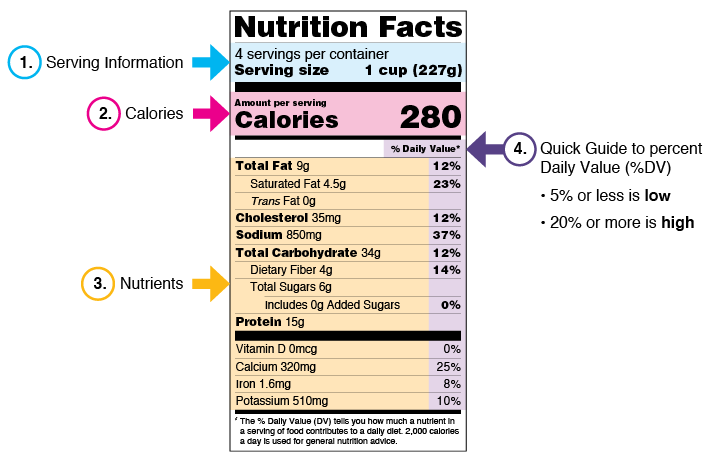







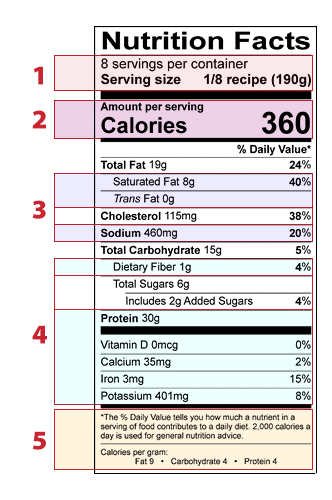


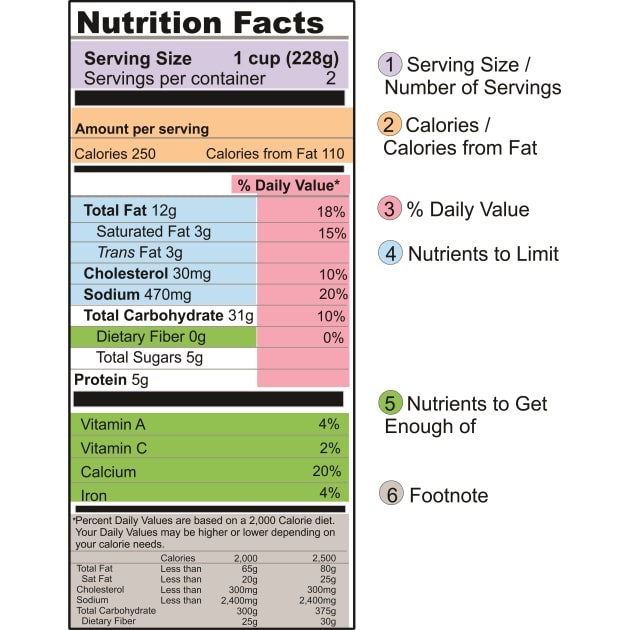






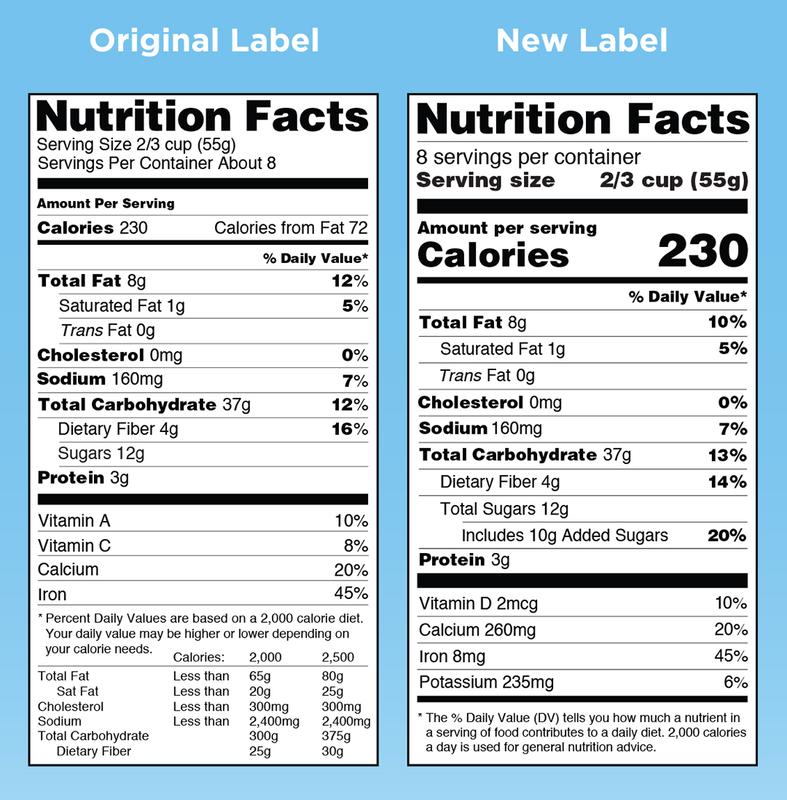

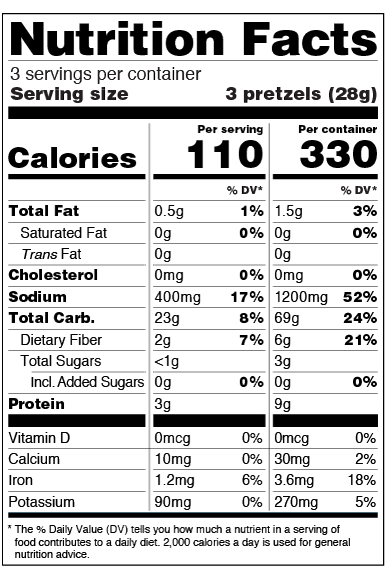
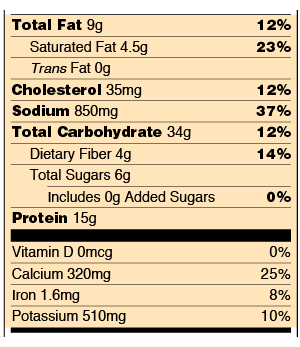
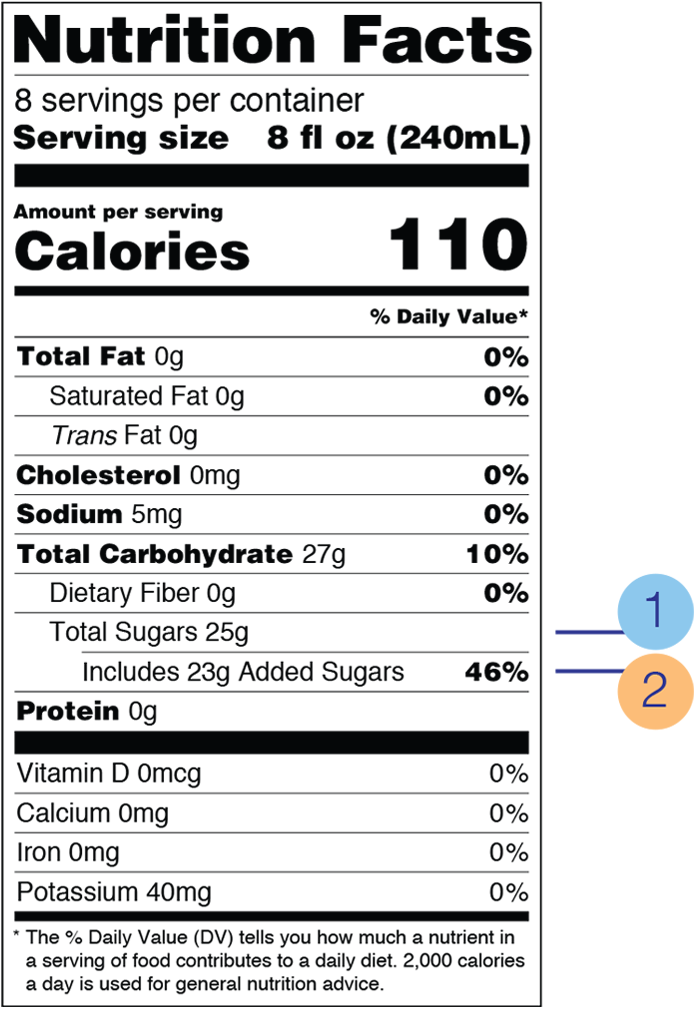

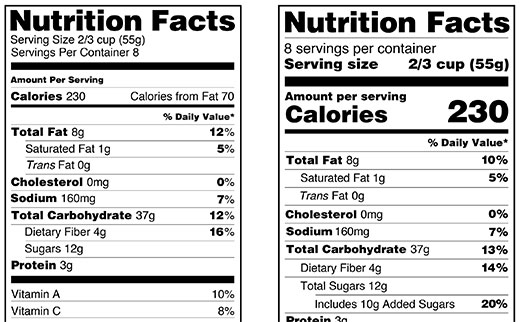
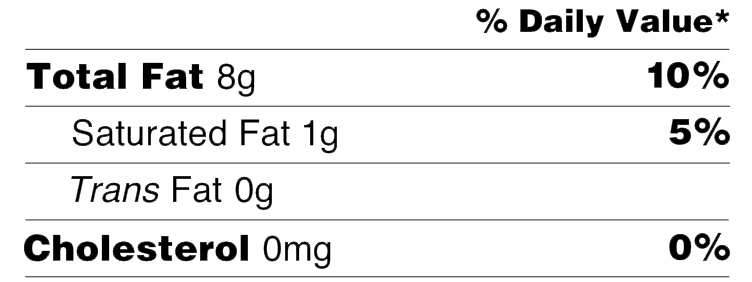





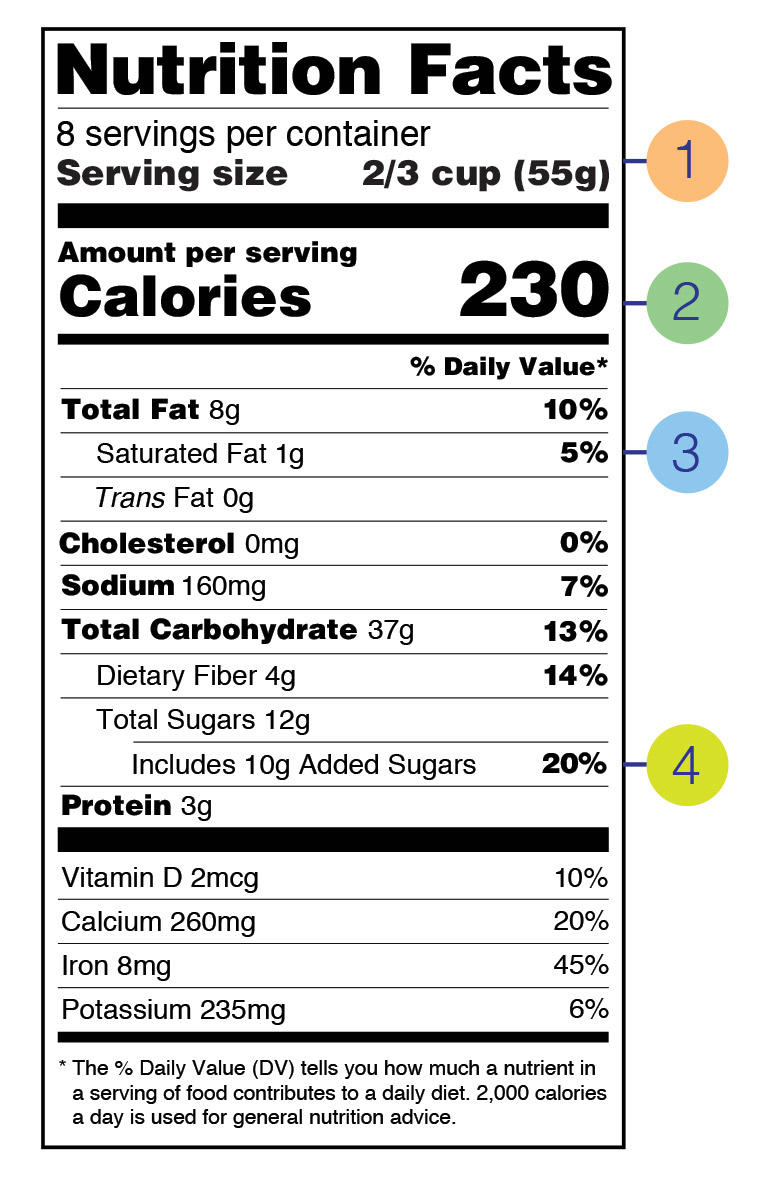


Post a Comment for "38 understanding nutritional facts on labels"